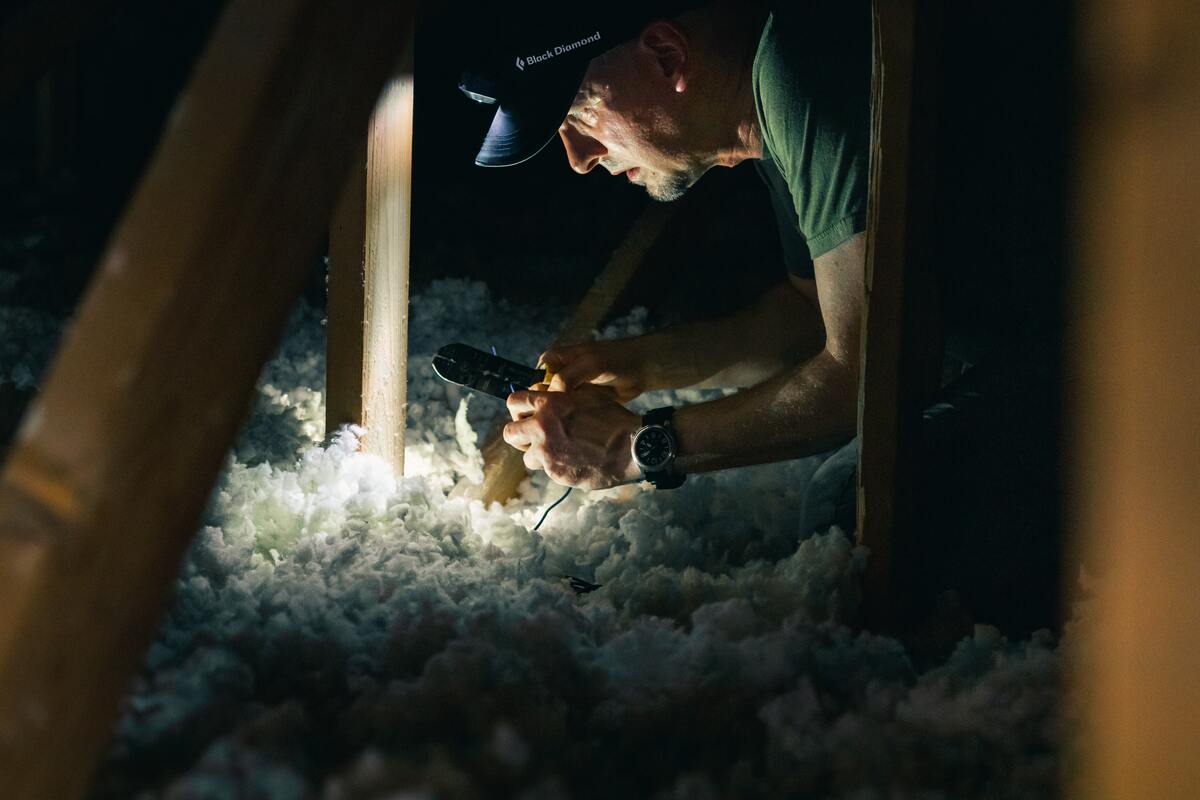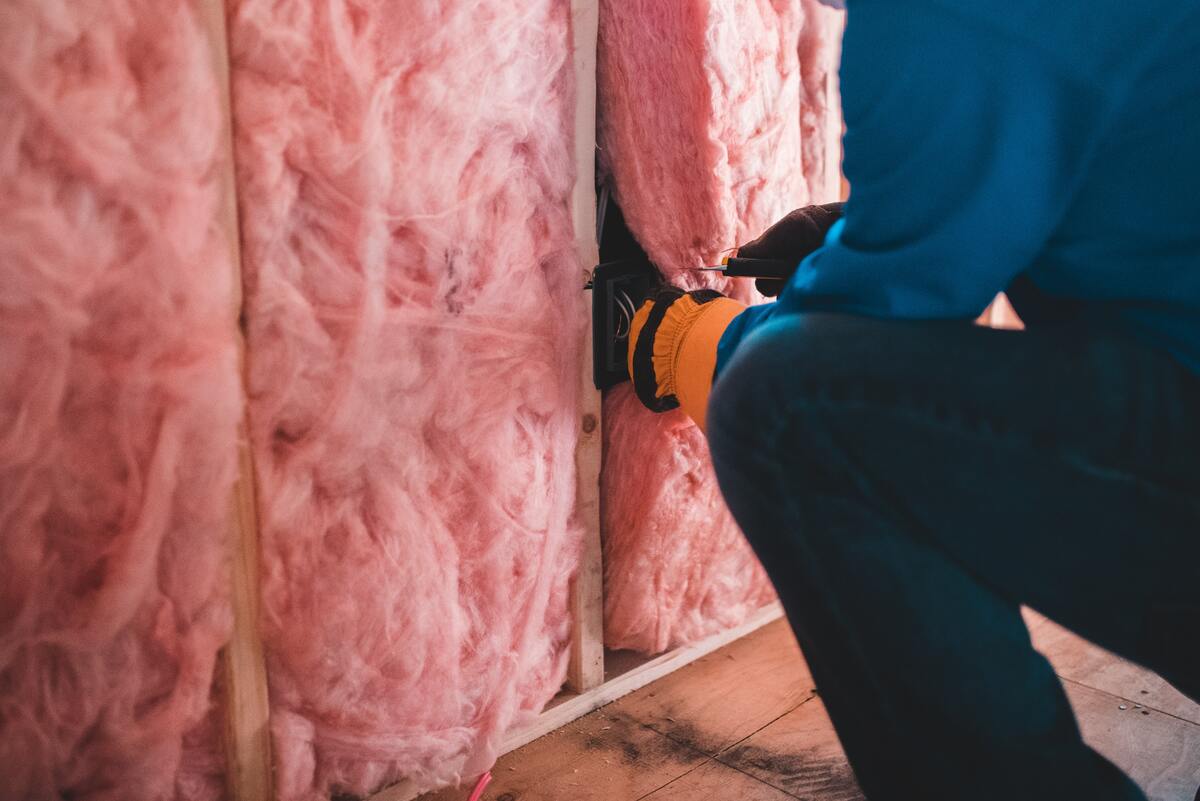
Want to save on your heating and cooling costs? Make sure your home is properly insulated!
According to the Environmental Protection Agency (EPA), homeowners can save an average of 15% on energy bills when they air seal their home and add sufficient insulation in the attic, walls, and floors.
With summer in full swing, your energy bills are likely to increase to keep your home cool and comfortable. However, you can take the strain off your air conditioning unit and lower your energy bills by installing or updating your insulation.
Luckily, A+ Insulation is here to provide spray foam insulation for your home.
Spray foam insulation comes in two types: closed cell and open cell spray foam. Each has its own benefits for your home. We break down the differences between them based on different categories so you can decide the best one to insulate your home with.
Cell Structure
Spray insulations are either closed cell or open cell, which refers to the bubbles or cells that make up the foam.
Open cell foam insulation is made from cells with tiny air bubbles inside. These air bubbles make open cell foam insulation softer and more flexible but also less resistant to moisture and water.
Closed cell foam insulation, on the other hand, is made of cells that are pressed together. Since the bubbles are completely closed off, this type of foam insulation is sturdier and highly resistant to water and moisture.
Density
Closed cell foam insulation’s structure means there’s no pocket of air amid its bubbles. Instead, it’s made with purely insulation material, making it denser than its open cell counterpart.
Typically, open cell foam has a core density of 0.5 pounds per cubic foot. Closed cell foam’s density is much higher than this, typically ranging from 1.75 to 2.2 pounds per cubic foot.
An insulation material’s density affects its other characteristics, such as the ability to keep moisture out, create air seal, or dampen sounds.
R-Value
The R-value is a measure of an insulation material’s thermal resistance. The higher the R-value, the better the insulation, which means higher energy savings.
Closed cell foam has a higher R-value than open cell foam. Typically, closed cell foam insulation has an R-value of 6.0 per inch, and can go up to 7. Meanwhile, open cell foams have an R-value of 3.5 per inch.
The much lower R-value of open cell foams can limit its insulating capability in places with extreme weather conditions.
Expansion
The expansion of foam insulation is reflected during application. Once foam insulation has been sprayed, it expands at different rates depending on the material.
Since closed cell foam is denser and sturdier, it doesn’t expand too much once sprayed. At most, it will expand up to an inch of thickness. Open cell foam, on the contrary, has a high expansion rate. Sometimes, it can expand up to 100 times its original thickness.
Open cell foam insulation’s ability to expand with just one spray makes it an ideal option for insulating tight spaces. The foam can get into the nooks and crannies of attics and crawl spaces, ensuring there aren’t spots where air and moisture can leak.
Blowing Agents
Blowing agents enhance the thermal performance of insulation materials. Typically, open cell spray foam uses water as a blowing agent. Closed cell spray, meanwhile, uses chemical agents, lending it a temporary chemical odor.
Moisture Permeability
As previously mentioned, the density of a spray foam insulation material affects its permeability.
Open cell foam is inherently permeable, which means water and moisture can move through the material. If exposed to water, open cell foam retains as little as 5% of its weight in water.
One benefit of permeable insulation is alerting you immediately when there are leaks since the water will discolor the foam. You can get the leak immediately repaired instead of letting the water build up, which could cause extensive damage.
Closed cell spray foam, on the other hand, is impermeable against moisture. Since water cannot pass through it, closed cell spray foam protects your home from airborne moisture and leaks and does not absorb water in case of flooding.
Air Seal Capabilities
Air sealing your home means locking outside air out to prevent the transfer of heat between your indoor and outdoor environment. Both open cell and closed cell spray foam insulation offer air sealing capabilities, but they differ by how much.
Since open cell foam is lighter, it needs at least 3 inches of thickness to provide proper air seal in walls and up to 10 inches to air seal the sealing. The denser closed cell foam, on the other hand, needs around 2 inches of coating for walls and 5 inches for the ceiling to provide air seal.
Cost

The cost of insulating a home varies by different factors such as the size of the area being insulated, the thickness of spray foam, and the type of spray foam insulation applied.
In general, open cell spray foam costs less than closed cell spray foam. It’s much easier to produce and apply open cell spray foam, so it comes out less expensive.
Closed cell spray foam, meanwhile, apart from being more expensive to manufacture, can also be more difficult to install. This drives up the costs further.
The Benefits of Open Cell Spray Foam Insulation
Open cell spray foam offers plenty of benefits as your choice of insulation.
1. Cost Savings
One of the biggest among its many benefits is the cost.
Apart from the relatively cheaper cost of manufacturing, open cell spray foam also has an excellent expansion rate. Since it expands more than closed cell spray foam once applied, it takes less material to insulate the same amount of space, saving on both labor and overall costs.
2. High Expansion Rate
The incredible expansion rate of open cell spray foam also means it fills every nook and cranny of the space you’re insulating.
Whether it’s your attic, your walls, or your crawlspace, using open cell spray foam ensures hard-to-reach places in these spaces are adequately air-sealed. This keeps cool and air-conditioned air inside your home while keeping hot air out.
3. Hydrophobic
Another plus on the open cell spray foam side is its ability to retain less than 5% of its weight in water. As a hydrophobic material, you won’t need to replace this type of insulation if ever there’s a leak and it becomes exposed to water.
4. Pest Deterrent
If you’re worried about rodents and pests burrowing into your insulation, you don’t have to anymore with open cell spray foam. This insulation material offers no food value to pests, so you won’t find them squirreling around your attic or crawlspace.
The Benefits of Closed Cell Spray Foam
Like its open cell counterpart, closed cell spray foam insulation also offers numerous benefits.
1. High R-Value
The best of them all is the higher R-value it provides compared to open cell foam.
The higher R-value this type of insulation provides comes in handy when you are hard-pressed to meet building code requirements because of the shallow depth of your walls. With higher R-value insulation, you can achieve the right R-value and remain code-compliant even with less space.
2. Flood Resistance
Another one of the main benefits of closed cell spray foam is its thickness. Thanks to the material’s density, moisture and water cannot pass through the insulation. This is extremely helpful in homes located in flood-prone areas, as the insulation can reject flood water, keeping your home intact.
3. Structural Rigidity
The closed cell foam’s rigidity also adds structural support to the edifice it’s applied to. Homes that are considered pole buildings, meaning the framework is made from wood posts buried into the earth, may need structural support. Closed cell foam spray provides this added layer of rigidity.
What is the Right Insulation for You?
Choosing between open cell and closed cell foam spray insulation comes down to what you need in your home.
If you live somewhere where the building code calls for a higher R-value or if you’re in a flood-prone area, then closed cell foam spray insulation is a great investment.
If you want to save on costs without compromising the quality of your insulation, then the more budget-friendly open cell foam spray is the ideal option.
Nevertheless, both of these options offer excellent benefits, including air sealing, sound dampening, and, of course, insulation against extreme weather conditions.
Entrust Your Insulation with the Experts
Still undecided? A+ Insulation can help. As the resident insulation experts in Kansas City, we offer top-notch services coupled with excellent customer support.
You can consult with our spray foam insulation technicians and find out the right insulation option for your home. The team can evaluate your home’s energy efficiency and identify problem areas. Then, we’ll recommend the ideal insulation solution, making sure your home is protected from excessive heat gain or loss.
With our superior insulation services that utilize quality tools and materials, you can achieve your desired indoor comfort. Schedule a free appointment with A+ Insulation today.